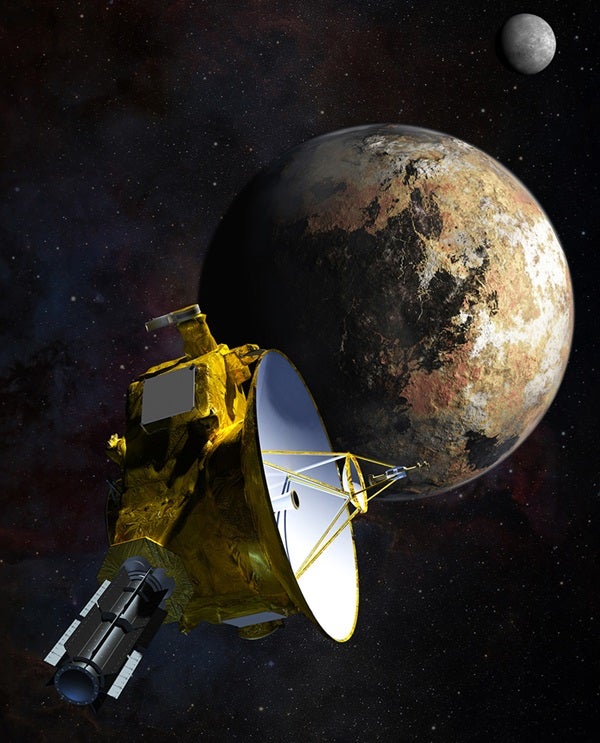“NASA’s first mission to distant Pluto will also be humankind’s first close-up view of this cold, unexplored world in our solar system,” said Jim Green from NASA Headquarters in Washington, D.C. “The New Horizons team worked very hard to prepare for this first phase, and they did it flawlessly.”
New Horizons launched in January 2006 and, after a voyage of more than 3 billion miles (5 billion kilometers), will soar close to Pluto, inside the orbits of its five known moons, this July 14. The fastest spacecraft ever launched, New Horizons awoke from its final hibernation period in early December. Since then, the mission’s science, engineering, and spacecraft operations teams have configured the piano-sized probe for distant observations of the Pluto system, starting with a long-range photo shoot that begins January 25.
Snapped by New Horizons’ telescopic Long-Range Reconnaissance Imager (LORRI), those pictures will give mission scientists a continually improving look at the dynamics of those moons. And they’ll play a critical role in navigating the spacecraft as it covers the remaining 135 million miles (220 million km) to Pluto.
“We’ve completed the longest journey any craft has flown from Earth to reach its primary target, and we are ready to begin exploring!” said Alan Stern from the Southwest Research Institute in Boulder, Colorado.
Over the next few months, LORRI will take hundreds of pictures of Pluto against star fields to refine the team’s estimates of New Horizons’ distance to Pluto. Though the Pluto system will resemble little more than bright dots in the camera’s view until May, mission navigators will use those data to design course-correction maneuvers that aim the spacecraft toward its flyby target point this summer. The first such maneuver could occur as early as March.
“We need to refine our knowledge of where Pluto will be when New Horizons flies past it,” said Mark Holdridge from Johns Hopkins University Applied Physics Laboratory in Laurel, Maryland. “The flyby timing also has to be exact because the computer commands that will orient the spacecraft and point the science instruments are based on precisely knowing the time we pass Pluto, which these images will help us determine.”
The “optical navigation” campaign that begins this month marks the first time pictures from New Horizons will be used to help pinpoint Pluto’s location.
This first approach phase, which lasts until spring, also includes a significant degree of other science. New Horizons will take essentially continuous data on the interplanetary environment where the Pluto system orbits, with its two charged-particle sensors measuring the high-energy particles streaming from the Sun, and its dust counter tallying dust-particle concentrations in the inner reaches of the Kuiper Belt — the unexplored outer region of the solar system that includes Pluto and potentially thousands of similar icy, rocky small planets.
More intensive Pluto studies begin in the spring when the cameras and spectrometers aboard New Horizons can provide resolutions better than the most powerful telescopes on Earth. Eventually, New Horizons will obtain images good enough to map Pluto and its moons better than has ever been achieved by any previous first planetary reconnaissance mission.










